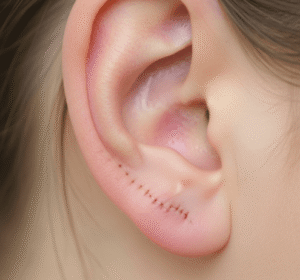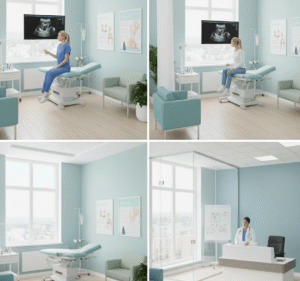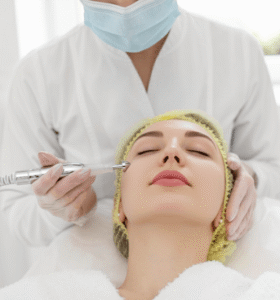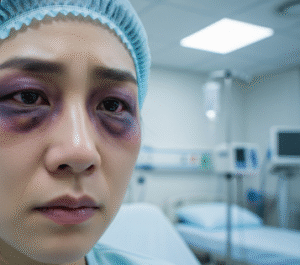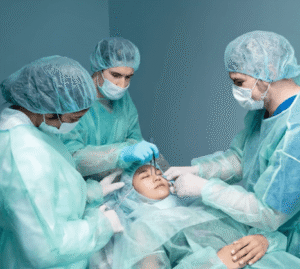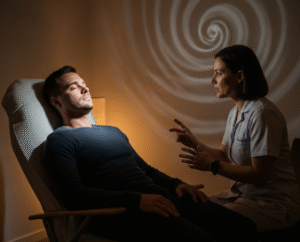Overview
Bradykinesia is a medical term describing abnormally slow movement. It is a hallmark symptom in Parkinson’s disease and other neurological disorders affecting the brain’s motor pathways. Individuals with bradykinesia may find it difficult to initiate movements, perform daily tasks, or maintain fluid motion, often leading to challenges in walking, speaking, and fine motor skills.
In South Korea, neurology and movement disorder clinics provide comprehensive evaluation, treatment, and rehabilitation programs to help patients manage bradykinesia and improve quality of life.
Key Facts
Highlights:
➡️ Bradykinesia is most commonly associated with Parkinson’s disease, but can also appear in other neurological conditions.
➡️ It affects voluntary movements, making simple tasks like buttoning clothes or walking more difficult.
➡️ Early recognition is important for diagnosis and management of underlying neurological disorders.
➡️ Symptoms often worsen over time, especially if untreated.
➡️ South Korea offers advanced diagnostic tools and movement disorder therapies to manage bradykinesia effectively.
What is Bradykinesia?
Bradykinesia refers to slowness in initiating and executing voluntary movements, often accompanied by a reduction in automatic movements such as blinking or swinging arms while walking.
Characteristics include:
- Delayed initiation of movement
- Decreased amplitude or speed of voluntary actions
- Difficulty with fine motor tasks, like writing or buttoning clothes
- Reduced facial expression (hypomimia)
- Often coexists with rigidity and tremor in movement disorders
It is considered a core motor symptom in Parkinsonian syndromes and is a critical marker for diagnosis.
What Symptoms are Related to Bradykinesia?
Symptoms may vary depending on severity and underlying cause:
- Slow walking (shuffling gait)
- Difficulty rising from a chair or bed
- Decreased arm swing when walking
- Soft or monotonous speech (hypophonia)
- Micrographia (small, cramped handwriting)
- Reduced facial expressions or blinking
- Difficulty performing repetitive tasks
Highlights:
➡️ Bradykinesia affects both gross and fine motor functions.
➡️ Daily activities can become progressively challenging, impacting quality of life.
What Causes / Possible Causes of Bradykinesia?
Highlights:
➡️ Parkinson’s Disease: Degeneration of dopamine-producing neurons in the substantia nigra, leading to impaired movement initiation.
➡️ Parkinsonism Syndromes:
- Drug-induced parkinsonism (antipsychotics or antiemetics)
- Vascular parkinsonism (due to small strokes affecting basal ganglia)
- Atypical parkinsonism (progressive supranuclear palsy, multiple system atrophy)
➡️ Neurological Disorders:
- Stroke or brain injury affecting motor pathways
- Neurodegenerative diseases impacting basal ganglia
➡️ Other Contributing Factors:
- Severe depression or psychomotor slowing
- Certain metabolic disorders
- Age-related decline in motor function
➡️ Mechanism: Bradykinesia arises from impaired dopamine signaling, leading to difficulty in initiating and controlling movement.
When Should I See My Doctor?
Highlights:
➡️ If you notice slowness in movement or difficulty performing routine tasks.
➡️ If accompanied by tremor, stiffness, or balance problems, suggesting Parkinsonian syndrome.
➡️ If facial expressions decrease or speech becomes soft, early evaluation is recommended.
➡️ If symptoms progressively worsen, prompt consultation can lead to early diagnosis and better management outcomes.
➡️ Early neurological assessment ensures timely intervention and slows progression of underlying disorders.
Care and Treatment
Management focuses on improving motor function, treating underlying causes, and supporting daily activities:
Highlights:
➡️ Medications:
- Levodopa-carbidopa to restore dopamine
- Dopamine agonists or MAO-B inhibitors
- Adjustments based on symptom severity
➡️ Physical Therapy: Exercises to improve mobility, balance, and flexibility.
➡️ Occupational Therapy: Strategies for performing daily tasks efficiently.
➡️ Speech Therapy: Treatment for soft speech or swallowing difficulties.
➡️ Lifestyle Modifications: Regular exercise, healthy diet, and adequate sleep.
➡️ Advanced Therapies: Deep brain stimulation (DBS) in selected cases for symptom control.
➡️ Patient Education: Guidance on pacing activities, fall prevention, and use of assistive devices.
Treatment Options in Korea
South Korea provides comprehensive neurology and movement disorder care for bradykinesia:
Highlights:
➡️ Specialized Neurology Clinics: Diagnosis and treatment of Parkinson’s disease and parkinsonism syndromes.
➡️ Advanced Imaging and Tests: MRI, PET scans, and dopamine transporter (DAT) scans for precise assessment.
➡️ Medication Management: Optimized drug regimens under expert supervision.
➡️ Rehabilitation Services: Physical, occupational, and speech therapy programs tailored to individual needs.
➡️ Deep Brain Stimulation Centers: Surgical treatment for advanced cases of Parkinson’s disease.
➡️ Multidisciplinary Approach: Collaboration among neurologists, physiotherapists, occupational therapists, and psychologists.
➡️ Medical Tourism Support: Multilingual consultations, structured evaluation, and follow-up care for international patients seeking treatment in Korea.



